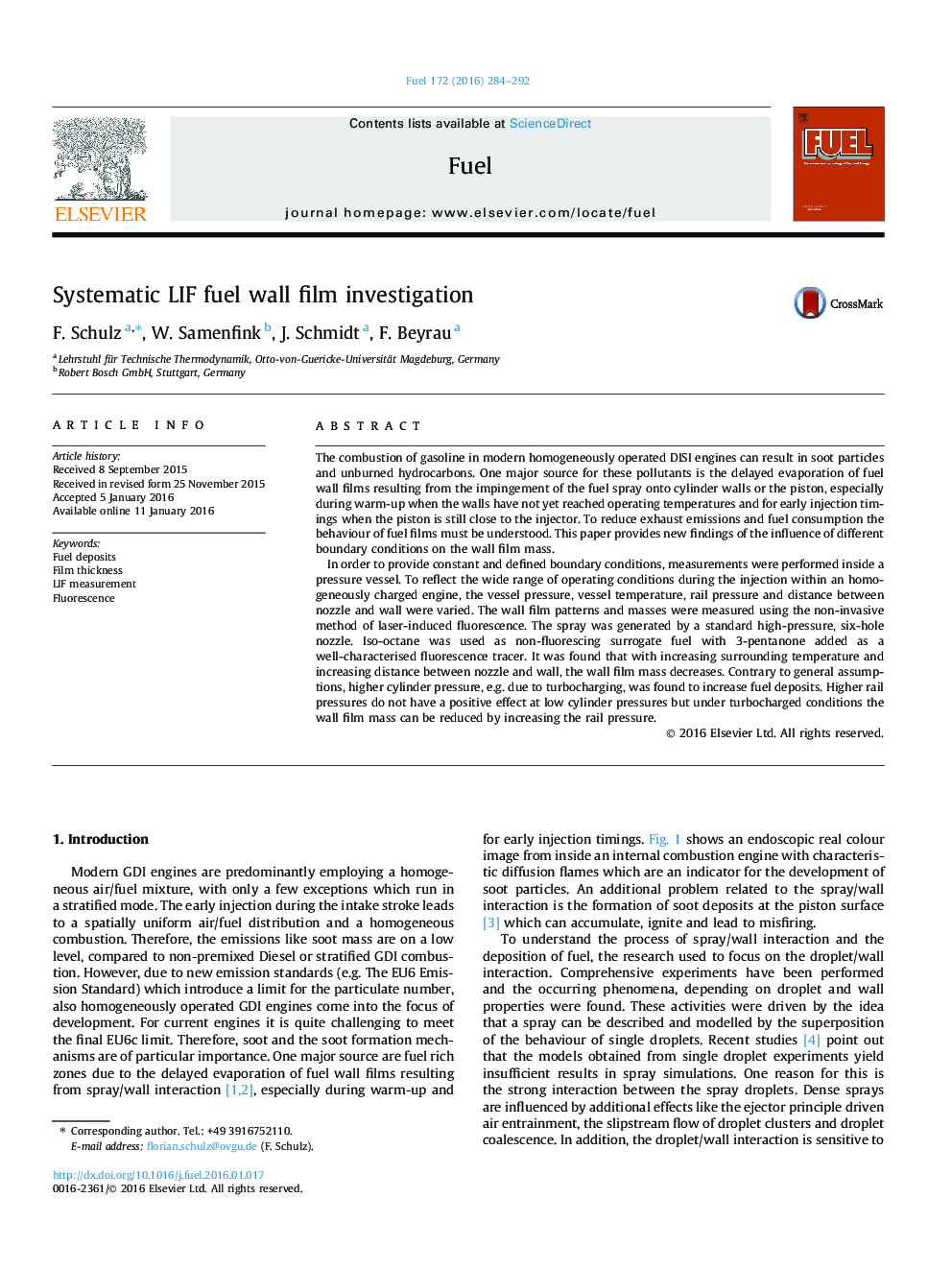| Article ID | Journal | Published Year | Pages | File Type |
|---|---|---|---|---|
| 205210 | Fuel | 2016 | 9 Pages |
The combustion of gasoline in modern homogeneously operated DISI engines can result in soot particles and unburned hydrocarbons. One major source for these pollutants is the delayed evaporation of fuel wall films resulting from the impingement of the fuel spray onto cylinder walls or the piston, especially during warm-up when the walls have not yet reached operating temperatures and for early injection timings when the piston is still close to the injector. To reduce exhaust emissions and fuel consumption the behaviour of fuel films must be understood. This paper provides new findings of the influence of different boundary conditions on the wall film mass.In order to provide constant and defined boundary conditions, measurements were performed inside a pressure vessel. To reflect the wide range of operating conditions during the injection within an homogeneously charged engine, the vessel pressure, vessel temperature, rail pressure and distance between nozzle and wall were varied. The wall film patterns and masses were measured using the non-invasive method of laser-induced fluorescence. The spray was generated by a standard high-pressure, six-hole nozzle. Iso-octane was used as non-fluorescing surrogate fuel with 3-pentanone added as a well-characterised fluorescence tracer. It was found that with increasing surrounding temperature and increasing distance between nozzle and wall, the wall film mass decreases. Contrary to general assumptions, higher cylinder pressure, e.g. due to turbocharging, was found to increase fuel deposits. Higher rail pressures do not have a positive effect at low cylinder pressures but under turbocharged conditions the wall film mass can be reduced by increasing the rail pressure.
